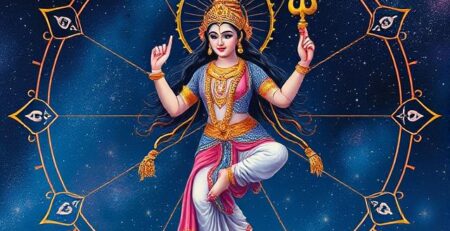The Ultimate Guide to Pashmina Shawls: Kashmir’s Luxurious Heritage
What Makes Pashmina Shawls Extraordinary?
Pashmina shawls represent the pinnacle of luxury textile craftsmanship, embodying centuries of Himalayan tradition and unparalleled natural beauty. These exquisite garments are not merely fashion accessories but tangible expressions of Kashmir’s rich cultural heritage and the remarkable adaptation of high-altitude goats to extreme mountain conditions.
The extraordinary nature of Pashmina lies in its source material – the ultra-fine undercoat fibers obtained from Changthangi goats that inhabit the harsh, high-altitude regions of Ladakh and Kashmir. These goats develop an incredibly soft, warm undercoat as protection against temperatures that can plummet to minus 40 degrees Celsius during winter months.
The Science Behind Pashmina’s Superiority
What sets authentic Pashmina apart from other luxury fibers is its remarkable fineness, measuring between 12-16 microns in diameter – significantly finer than the finest cashmere, which typically measures 18-19 microns. This microscopic difference translates into extraordinary softness, lightweight warmth, and an almost ethereal texture that has captivated royalty and fashion connoisseurs for centuries.
The fiber’s natural crimp provides exceptional insulation properties while maintaining breathability, making Pashmina shawls ideal for various climates and seasons. Unlike synthetic alternatives, genuine Pashmina regulates body temperature naturally, keeping wearers warm in cold conditions while remaining comfortable in moderate temperatures.
Kashmir: The Birthplace of Pashmina Excellence
Kashmir, often called “Paradise on Earth,” is universally recognized as the premier destination for authentic Pashmina shawls. The region’s unique geographical position, nestled between the Karakoram and Himalayan mountain ranges, creates ideal conditions for both sourcing raw materials and perfecting the intricate craftsmanship required for creating world-class Pashmina products.
Historical Significance of Kashmiri Pashmina
The tradition of Pashmina weaving in Kashmir dates back over 500 years, with historical records indicating that the craft was introduced during the 15th century reign of Sultan Zain-ul-Abidin. The industry flourished under Mughal patronage, with emperors like Akbar commissioning elaborate Pashmina shawls that became symbols of imperial luxury and refinement.
European travelers and traders in the 18th and 19th centuries were mesmerized by Kashmir’s Pashmina shawls, leading to their introduction in European high society. Napoleon Bonaparte famously gifted Pashmina shawls to Empress Josephine, further cementing their status as ultimate luxury items.
Geographical Advantages of Kashmir
Kashmir’s strategic location provides several advantages for Pashmina production:
Proximity to Source Materials: The region’s closeness to Ladakh, where Changthangi goats are raised, ensures access to the finest raw materials. This geographical advantage allows Kashmiri artisans to select premium-grade fibers directly from herders.
Climate Conditions: Kashmir’s temperate climate, with distinct seasons, provides ideal conditions for processing and weaving Pashmina. The moderate humidity levels prevent fiber damage during various production stages.
Artisan Expertise: Generations of Kashmiri families have perfected Pashmina craftsmanship, passing down intricate techniques through oral traditions. This concentrated expertise makes Kashmir the undisputed center of Pashmina excellence.
Cultural Integration: Pashmina weaving is deeply integrated into Kashmiri culture, with entire communities dedicated to different aspects of production, from fiber processing to final finishing.
Understanding 100% Pure Pashmina Composition
Authentic 100% Pashmina is composed entirely of fibers obtained from the undercoat of Changthangi goats, also known as Capra hircus. These remarkable animals, indigenous to the high-altitude regions of Ladakh, have evolved over millennia to survive in some of Earth’s most challenging environmental conditions.
The Changthangi Goat: Nature’s Miracle
Changthangi goats, named after the Changthang plateau in Ladakh, are extraordinary creatures perfectly adapted to life at altitudes exceeding 4,000 meters above sea level. During harsh winter months, these goats develop a double-layered coat consisting of coarse outer guard hairs and an incredibly soft, fine undercoat that serves as insulation against extreme cold.
The undercoat, measuring just 12-16 microns in diameter, is what becomes precious Pashmina fiber. Each goat produces approximately 80-170 grams of this valuable undercoat annually, which explains the premium pricing of authentic Pashmina products.
Fiber Collection Process
Traditional Pashmina fiber collection occurs during late spring when goats naturally shed their winter undercoats. Skilled herders use specialized combs to gently separate the fine undercoat fibers from coarser outer hairs, a labor-intensive process requiring considerable expertise and patience.
The collected raw fiber undergoes extensive sorting and cleaning to remove impurities, guard hairs, and vegetable matter. This meticulous process ensures that only the finest, purest fibers proceed to subsequent processing stages.
Processing and Preparation
Once collected and sorted, raw Pashmina fibers undergo several preparation stages:
Dehairing: Mechanical and manual processes remove remaining guard hairs and impurities, leaving only the finest undercoat fibers.
Washing: Gentle washing removes natural oils and residual dirt while preserving fiber integrity and natural properties.
Carding: Fibers are aligned and prepared for spinning using traditional hand cards or modern carding machines.
Spinning: Master spinners transform prepared fibers into incredibly fine yarns, often measuring less than one-tenth the thickness of human hair.
Decoding Pashmina Quality: What Does 90% Pashmina Mean?
The percentage indication on Pashmina products represents the proportion of genuine Pashmina fibers in the final product. Understanding these percentages is crucial for making informed purchasing decisions and ensuring value for investment.
100% Pashmina: The Ultimate Standard
Products labeled as 100% Pashmina contain exclusively fibers from Changthangi goats, with no blending of other materials. These represent the highest quality and command premium prices due to their rarity, exceptional properties, and intensive production requirements.
Characteristics of 100% Pashmina include:
- Ultimate softness and lightweight feel
- Superior warmth-to-weight ratio
- Natural temperature regulation
- Exceptional durability when properly cared for
- Distinctive natural luster and drape
90% Pashmina: Premium Blended Quality
90% Pashmina indicates that the product contains 90% genuine Pashmina fibers blended with 10% other high-quality materials, typically silk or fine wool. This blending serves several purposes:
Enhanced Durability: The addition of silk or fine wool can improve the shawl’s structural integrity and resistance to wear.
Improved Workability: Blended yarns are often easier to weave, allowing for more intricate patterns and designs.
Cost Optimization: Blending reduces overall production costs while maintaining most of Pashmina’s desirable properties.
Varied Textures: Different blend ratios can create unique textures and aesthetic qualities.
Other Common Pashmina Blends
70% Pashmina: Contains significant amounts of other fibers, often silk or merino wool, providing good quality at more accessible price points.
50% Pashmina: Half Pashmina content, typically blended with silk, offering some authentic Pashmina characteristics at moderate prices.
Pashmina-style products: Items labeled simply as “Pashmina” without percentage indicators may contain minimal or no genuine Pashmina fibers.
The Artisan Journey: From Fiber to Finished Shawl
Creating an authentic Pashmina shawl involves numerous skilled artisans, each specializing in specific aspects of the complex production process. This collaborative approach, refined over centuries, ensures that every genuine Kashmiri Pashmina shawl meets the highest standards of quality and craftsmanship.
Traditional Handloom Weaving
Kashmiri artisans employ traditional handlooms, often family heirlooms passed down through generations, to weave Pashmina yarns into exquisite fabrics. The weaving process requires exceptional skill and patience, with experienced weavers producing only a few inches of fabric per day when working on fine-quality shawls.
Different weaving techniques create distinct fabric characteristics:
Plain Weave: Creates smooth, even surfaces ideal for showcasing natural fiber beauty and embroidered embellishments.
Twill Weave: Produces diagonal patterns and enhanced drape, popular for contemporary Pashmina designs.
Diamond Weave: Traditional pattern creating subtle geometric textures highly prized in classical Kashmiri shawls.
Dyeing and Color Development
Traditional Pashmina dyeing employs natural colorants derived from local plants, minerals, and insects. Master dyers, known as “rangrez,” possess deep knowledge of color chemistry and seasonal variations in natural dye sources.
Popular natural dyes include:
- Saffron for golden yellows and oranges
- Walnut hulls for rich browns
- Madder root for deep reds
- Indigo for blues and purples
- Turmeric for bright yellows
Modern Pashmina production also utilizes high-quality synthetic dyes that offer broader color palettes and improved colorfastness while maintaining environmental responsibility.
Embellishment and Finishing
Many premium Pashmina shawls feature intricate embellishments that showcase Kashmir’s rich decorative traditions:
Embroidery Styles:
- Sozni: Delicate needlework creating paisley and floral patterns
- Aari: Chain-stitch embroidery often incorporating metallic threads
- Kani: Traditional technique creating intricate woven patterns
Border Treatments:
- Hand-twisted fringes
- Decorative edge bindings
- Contrasting color accents
Identifying Authentic Pashmina: A Buyer’s Guide
With numerous imitations flooding global markets, identifying genuine Pashmina requires knowledge and careful examination. Authentic Pashmina shawls possess distinctive characteristics that differentiate them from synthetic alternatives and inferior blends.
Physical Characteristics of Genuine Pashmina
Texture: Authentic Pashmina feels incredibly soft yet substantial, with a distinctive smooth texture that improves with handling. Synthetic alternatives often feel artificially smooth or slightly rough.
Weight: Genuine Pashmina shawls are surprisingly lightweight despite their warmth, reflecting the fiber’s exceptional properties.
Luster: Natural Pashmina exhibits a subtle, natural sheen that changes with light angles, unlike the uniform shine of synthetic materials.
Drape: Authentic shawls drape elegantly and naturally, conforming to body contours without stiffness.
The Ring Test
A traditional authenticity test involves passing the shawl through a wedding ring. Genuine fine-gauge Pashmina shawls should pass through easily, demonstrating the fiber’s fineness and weaving quality. However, this test should be performed carefully to avoid damage.
Price Considerations
Authentic Pashmina commands premium prices reflecting its rarity, production complexity, and artisan skill requirements. Suspiciously low prices often indicate synthetic alternatives or poor-quality blends.
Typical price ranges vary based on:
- Pashmina percentage and quality
- Weaving complexity and fineness
- Embellishment intricacy
- Brand reputation and authenticity guarantees
Caring for Your Pashmina Investment
Proper care ensures that premium Pashmina shawls maintain their beauty and integrity for generations. These delicate textiles require specific handling and storage practices to preserve their unique properties.
Cleaning and Maintenance
Professional Cleaning: Most authentic Pashmina shawls benefit from professional dry cleaning by specialists experienced with luxury textiles.
Hand Washing: When hand washing is necessary, use cool water with specialized wool detergents, avoiding agitation or wringing.
Drying: Lay flat on clean towels away from direct sunlight and heat sources, reshaping gently while damp.
Storage Recommendations
Climate Control: Store in cool, dry environments with stable temperature and humidity levels.
Protection: Use breathable garment bags or acid-free tissue paper to prevent dust accumulation and insect damage.
Folding: Minimize sharp folds by rolling or laying flat when possible, changing fold lines periodically.
Contemporary Relevance and Fashion Integration
Modern fashion designers increasingly recognize Pashmina’s versatility and timeless appeal, incorporating these luxury textiles into contemporary wardrobes and haute couture collections. The growing emphasis on sustainable fashion and artisan craftsmanship has renewed appreciation for authentic Pashmina products.
Versatile Styling Options
Pashmina shawls offer numerous styling possibilities:
- Elegant evening wraps for formal occasions
- Sophisticated scarves for professional settings
- Casual throws for relaxed elegance
- Travel companions providing comfort and style
Investment Value
Quality Pashmina shawls often appreciate in value over time, particularly authentic vintage pieces and those featuring exceptional craftsmanship. This investment potential, combined with practical versatility, makes Pashmina acquisition both aesthetically and financially rewarding.
Supporting Artisan Communities and Sustainable Practices
Purchasing authentic Pashmina products directly supports traditional artisan communities in Kashmir and Ladakh, preserving ancient crafts and providing sustainable livelihoods for skilled craftspeople. Many contemporary Pashmina producers emphasize ethical sourcing, fair trade practices, and environmental responsibility.
Ethical Considerations
Responsible Pashmina production ensures:
- Humane treatment of Changthangi goats
- Fair compensation for herders and artisans
- Preservation of traditional techniques
- Environmental protection in sensitive high-altitude ecosystems
Cultural Preservation
Supporting authentic Pashmina industry helps preserve Kashmir’s rich cultural heritage, ensuring that traditional knowledge and skills continue to benefit future generations while maintaining the region’s reputation for textile excellence.
Conclusion: Embracing Pashmina’s Timeless Luxury
Pashmina shawls represent more than mere fashion accessories – they embody centuries of human ingenuity, natural wonder, and artistic excellence. From the harsh plateaus of Ladakh to the skilled workshops of Kashmir, every authentic Pashmina tells a story of dedication, tradition, and uncompromising quality.
Understanding the distinctions between 100% Pashmina and blended alternatives, recognizing authentic products, and appreciating the complex journey from goat to finished shawl enables informed appreciation of these remarkable textiles. Whether seeking investment pieces, meaningful gifts, or personal luxury items, genuine Pashmina shawls offer unparalleled combination of beauty, functionality, and cultural significance.
As global appreciation for sustainable fashion and artisan craftsmanship continues growing, Pashmina’s relevance and desirability will likely increase, making authentic pieces even more valuable and cherished. By choosing genuine Kashmiri Pashmina, consumers not only acquire extraordinary textiles but also support preservation of one of humanity’s most refined craft traditions.
The legacy of Pashmina extends far beyond its physical properties, representing humanity’s ability to transform natural materials into objects of transcendent beauty through skill, patience, and cultural wisdom. In our increasingly digital world, these tangible connections to traditional craftsmanship provide meaningful counterbalances to mass production and synthetic alternatives.
Investing in authentic Pashmina means participating in this rich heritage while enjoying the practical benefits of owning one of nature’s most remarkable textile achievements. Whether worn for special occasions or cherished as heirloom pieces, genuine Pashmina shawls continue justifying their reputation as the ultimate expression of luxury, comfort, and timeless elegance.











